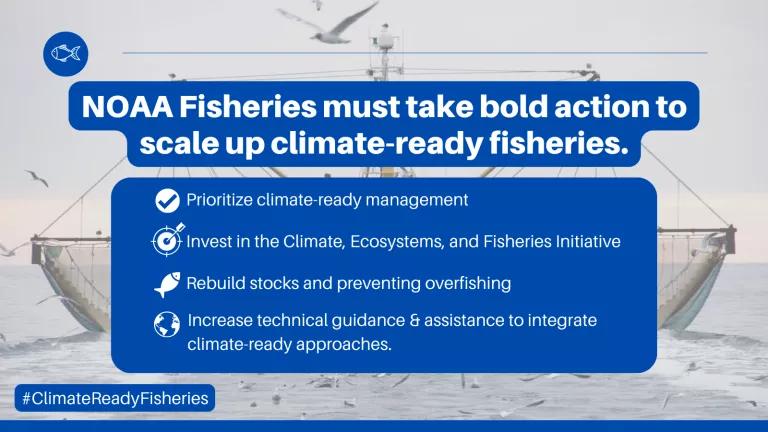Hurricane Dorian Highlights the Need for Effective Home Buyouts
The cycle of flood-rebuild-repeat must end. It’s a matter of equity.

Florida Department of Transportation members work on the closed A1A coastal route following Hurricane Dorian, September 4, 2019
The cycle of flood-rebuild-repeat must end. It’s a matter of equity.
As coastal residents of the U.S. Southeast struggle to bail out from Hurricane Dorian, a new NRDC report shows why many will likely use federal aid to rebuild on property certain to flood again, rather than relocate to higher ground.
The problem: It takes five years, on average, to receive a federal buyout for flooded properties. That’s far too long, in many cases, for people to wait for the assistance they need to relocate, so they stay put and make do until disaster strikes next.
That can hit hardest in low-income communities, among people of color and others who too often pay the highest price for hurricanes, storms, and flooding.
We can do better—and we must, now more than ever, in fact, as rising seas and a warming planet promise even more devastating hurricanes and floods.
As Dorian bore down on the East Coast, more than 342,000 households having less than $25,000 in annual income, from Florida to the Carolinas, prepared to evacuate. Many are now bailing out of flooded homes. Some have done so repeatedly in just the past three years in the wake of Hurricanes Matthew, Irma, Florence, and Michael. Often they use money from a taxpayer-funded insurance program to rebuild on land likely to flood again.
There’s a better alternative that can provide a lifeline to these people and put an end to the costly cycle of flood-rebuild-repeat. The Federal Emergency Management Agency, or FEMA, allows residents of flooded homes to apply to sell their property to a government agency, usually the local city or county, which FEMA reimburses through grants. Structures on the property are demolished and removed. The land is converted to public space—devoted to a park, wetlands restoration, stormwater management, or some other public purpose.
The homeowner gets funding to move to higher, more protected ground. The local government adds public property for the common good. And American taxpayers take a liability off the books: No longer are we on the hook to rebuild a property prone to flood again.
But as a new NRDC analysis of 30 years of FEMA buyout and funding data has found, a homeowner applying for a FEMA buyout will typically wait more than five years, on average, to complete the process and get paid.
What, exactly, is a homeowner supposed to do in the meantime? Especially a low-income homeowner who lacks the resources to walk away from a damaged home and relocate?
Many simply give up on a buyout. Instead they continue to be reimbursed for damages through FEMA’s National Flood Insurance Program, then use the money to rebuild in a flood-prone area, knowing it’s likely only a matter of time before they get washed out once again. Or worse, they sell their home for a fraction of its value to a real estate speculator who flips it to the next unsuspecting owner or renter, prolonging the problem.
And who helps pay for the rebuild? U.S. taxpayers, sometimes over and over again.
Under the National Flood Insurance Program, in fact, more than 36,000 properties have been designated “severe repetitive loss properties.” Since 1978, each of these properties has been flooded and rebuilt, on average, five times.
Some have undergone the flood-rebuild-repeat cycle more than 30 times, at a total cost of $5.5 billion—and counting. This comes at the expense of the National Flood Insurance Program, which has had to borrow about $40 billion from taxpayers in order to stay financially solvent.
It’s never made sense to rebuild on flooded property that’s bound to flood again. It’s even crazier now, with rising seas and global warming making storms, floods, and hurricanes ever more devastating in at least three ways.
First, warming ocean waters pack more power into hurricanes, which form and strengthen over the ocean, gathering energy (in the form of heat) from these waters. The waters around the Bahamas, for instance, where Hurricane Dorian lingered for several days, were 84.2 degrees Fahrenheit, or about 1.8 degrees warmer than normal for this time of year. That helped amp up Dorian from a category 2 force hurricane into a category 5 monster in just two days, much as happened with Hurricane Michael, which lingered over Gulf of Mexico waters 4 or 5 degrees warmer than normal last year before slamming into the Florida Panhandle.
Second, warmer air holds more moisture. That means storms that build over warmer waters deliver more rain. And, finally, rising seas expose more of our coastal communities to the storm surge that accompanies hurricanes and other large storms.
“As seas rise and floods grow more common, a buyout must become one of the first options available to owners of increasingly vulnerable homes, not one of the last and least accessible options,” my colleagues Anna Weber and Rob Moore write in their new report, Going Under: Long Wait Times for Post-Flood Buyouts Leave Homeowners Underwater. “For this to happen, we need a more efficient, equitable, predictable, and timely way of facilitating buyouts.”
One way to make buyouts more accessible, equitable, and efficient is to make it possible for FEMA to finance buyouts directly through the National Flood Insurance Program. Congress could do this through pending legislation in both the House and Senate to reform the troubled program.
NRDC has suggested that FEMA be authorized to pre-approve and guarantee a buyout for an interested homeowner and make that buyout a benefit of the property owner’s insurance policy. We’ve also recommended that Congress make buyouts an eligible use of flood mitigation funding that’s already available to homeowners through the National Flood Insurance Program. These changes would go a long way toward making buyouts more timely and better aligning the nation’s flood response assistance with the rising challenges we face.
In addition, federal, state, and local government agencies need to identify the roadblocks to timely buyouts and streamline the application process. And flood-prone coastal states and localities need to form their own buyout programs, with help from local conservation groups and other nonprofit organizations.
Climate change means storms, hurricanes, and flooding are going to keep getting worse. We’ll all pay a price, but some of us will bear a greater burden than the rest. As a matter of environmental justice and a matter of prudent planning, an effective program for buying out damaged properties in flood-prone areas is an essential part of making our communities more resilient in the face of the changes to come. It’s time for us to get this right.



